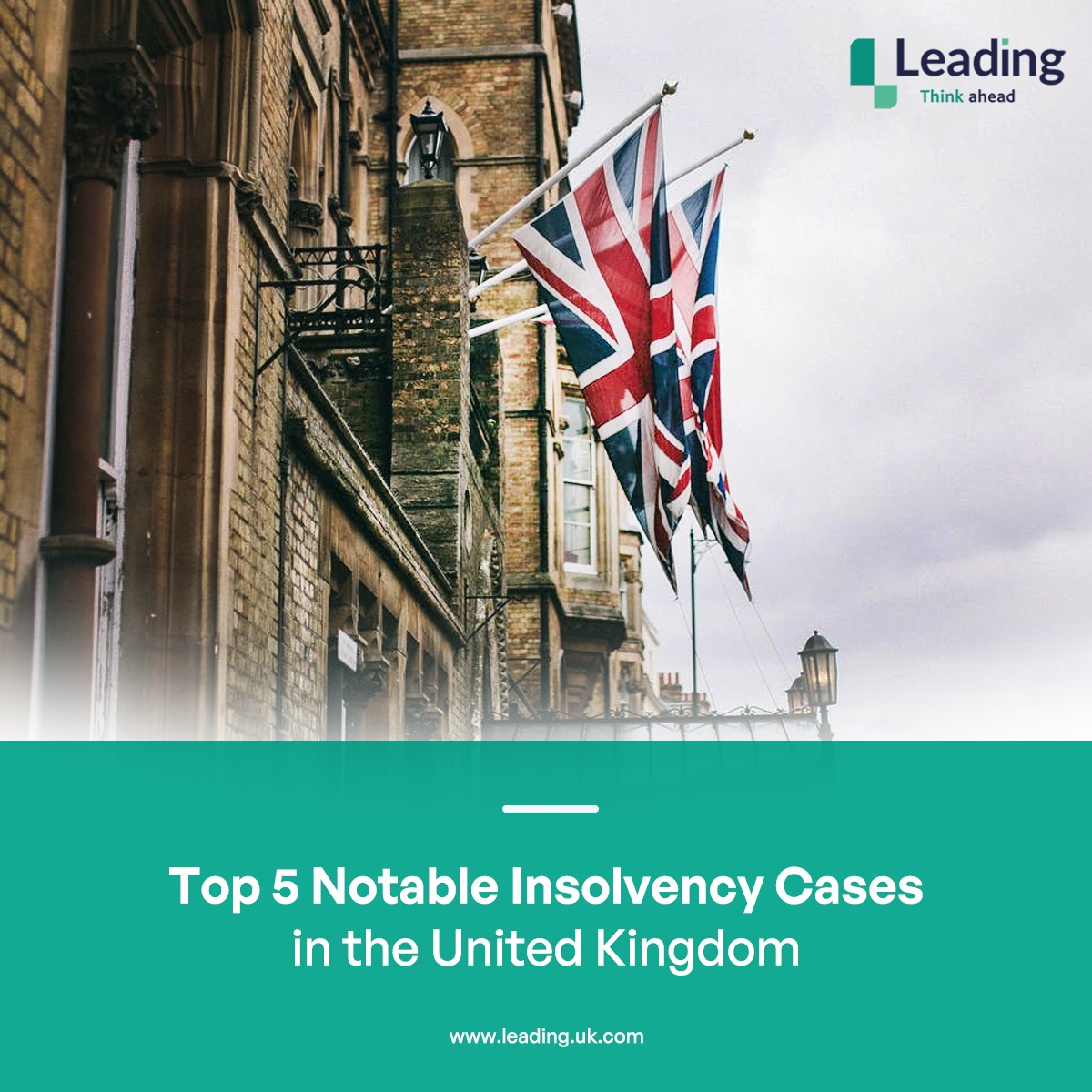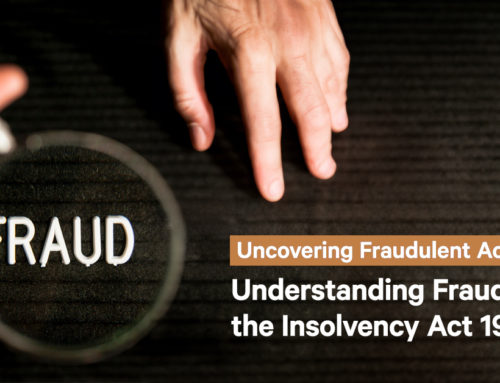There are some insolvency cases that, due to the nature of the insolvent company, or the complexity of the case, become notable in history. The benefit of notable insolvency cases is that future insolvency practitioners (IPs) have the opportunity to learn from them.
So, let’s take a look at the top 5 notable insolvency cases every insolvency professional should know about.
-
Eurosail
Eurosail bought a portfolio of sub-prime mortgages which were funded by loan notes of various currencies and classes. Eurosail entered into a variety of currency swaps with the Lehman Brothers Group, which protected Eurosail from exchange rate fluctuations. Should there be a default on the notes, including Eurosail’s ability to pay its debts, they become due for payment.
When the Lehman Brothers Group collapsed, Eurosail’s currency protection also collapsed and left them with a claim in the following Lehman’s insolvency procedure. Together with the subsequent negativity of interest and currency rates, it meant that Eurosail’s audited accounts showed that their liabilities were far higher than their assets. But Eurosail was able to pay interest on the notes as well as repay the principal on the basis that funds were available.
Subsequently, a group of subordinated noteholders started proceedings on whether they were able to declare an event of default; the argument being that if Eurosail were allowed to pay interest on the notes and principal on the funds that ranked higher, there would be a shortfall in funds. However, should an event default be declared, their position would be better as they are then ranked pari passu with the noteholders.
Ultimately, the Supreme Court, which upheld the Court of Appeal’s decision, held that:
- The statutory test for a company unable to pay its debts is materially different from the position under the Companies Act 2006.
- The balance sheet test requires a court to be satisfied that, on the balance of probabilities, the company has insufficient assets to meet all its liabilities, including prospective and contingent liabilities.
- The more distant liabilities, the harder this will be to establish.
- There is no need to have recourse to the concept of ‘the point of no return’ as alluded to in the Court of Appeal judgement, and the expression should not pass into common usage as a paraphrase of Section 123(2).
-
Nortel
Nortel and the Lehman Brothers Group case deals with the underfunding of each group’s pension scheme, with the real possibility that each company could become the subject of a financial support direction and, therefore, a contribution notice under the Pensions Act 2004. According to the law, the Pensions Regulator can impose liability for a pension scheme debt on a company with a defined benefit scheme.
A creditor can prove in the administration or liquidation of a company they are owed a debt. The ‘debt’ in this context includes:
- A liability to which the company is subject when it goes into administration or liquidation (rule 13.12(1)(a) Insolvency Rules 1986).
- A liability that arises from an obligation to which the company was subject when it entered administration or liquidation (rule 13.12(1)(b)).
The Supreme Court held that the financial support direction liabilities were provable debts in the administration of the companies under rule 13.12(1)(b) of the Insolvency Rules 1986. It held that the companies were under an obligation to make a payment to the Pensions Regulator pursuant to the statutory scheme even though they were not subject to an FSD when they entered administration.
-
McDonagh and Pengelly
Employees claimed against the National Insurance fund for arrears of pay as well as unpaid holiday pay. However, their claim was refused on the basis that there was no entitlement. This was due to the fact that the company was already insolvent as it had entered into a CVA, which wasn’t known by the employees. Insolvency law and Section 182 of the Employment Rights Act 1996 says that the Secretary of State should make payment from the National Insurance fund if:
- The employee’s employer has become insolvent.
- The employee’s employment has been terminated.
- On the appropriate date, the employee was entitled to be paid, the whole or part of any debt to which this part applies.
Although the employees’ claims were upheld by two employment tribunals, the Secretary of State appealed the decisions. Ultimately, the Employment Appeals Tribunal (EAT) held that the employees of companies that had entered into a CVA were not entitled to payments from the National Insurance fund when the company then went into liquidation. The reason being that legislation, such as employee claims, can only be applied to one insolvency event and the single date is the date the company entered the court-approved CVA, not the subsequent liquidation.
-
Ethel Austin and Woolworths
This case involved two retailers – Ethel Austin and Woolworths – that went into administration and subsequently into liquidation. Following redundancy for all employees with inadequate or no consultation, employees of stores that had 20 or more staff receive a protective award from the employment tribunal. However, employees at stores of less than 20 staff didn’t receive a protective award. The reason for this is that it was considered each store was a different ‘establishment’.
After going to the Employment Appeals Tribunal (EAT), the decision was that it was possible to interpret the words ‘at one establishment’ broadly, i.e. to mean the whole of the relevant retail business instead of individual stores. They also concluded that ‘at one establishment’ should be deleted from section 188 as a matter of construction.
- Data Power Systems Ltd
With a major project failing due to limited assets and large liabilities to various creditors, the company found they were insolvent, although there were no employees, and they didn’t grant any securities over their assets. A group of creditors applied for an administration order, with the administrator filing evidence that administration would lead to a better return for the creditors than liquidation.
However, a different creditor issued a counter application, wanting to appoint a different insolvency practitioner (IP) to act as administrator. Their application also contained a statement that said the statutory purposes of administration were reasonably capable of achievement. The statutory purposes under paragraph 3(1) are:
- The rescue of the company as a going concern.
- Achieving a better return to creditors of the company would be the case in the liquidation of the company.
- Achieving a better return to preferential creditors or one or more of the secured creditors of the company.
The High Court refused the administration application and appointed a provisional liquidator to act for the company. The reason being that whilst they accepted the company was insolvent, the court concluded that prior evidence didn’t demonstrate that any of the statutory purposes of administration were reasonably capable of achievement. This means that despite the company being insolvent and obviously needed to enter an insolvency procedure, the court wasn’t able to make an administration order.

So these were the top 5 Notable Insolvency Cases in the United Kingdom. If you are struggling with corporate or personal debt and unsure what the right route is to deal with your creditors, the first step is to seek professional advice. Our highly experienced professionals at Leading are on hand to help with advice on managing personal and professional insolvency matters. Contact us today and discover how we can help you.






